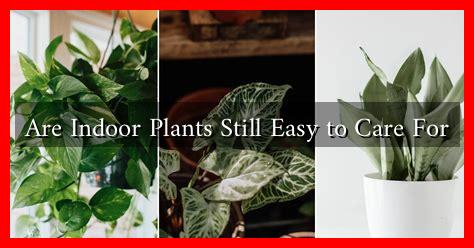-
Table of Contents
Are Indoor Plants Still Easy to Care For?
Indoor plants have long been celebrated for their aesthetic appeal and air-purifying qualities. However, as lifestyles evolve and urban living becomes more prevalent, the question arises: Are indoor plants still easy to care for? This article delves into the current state of indoor plant care, exploring the factors that influence their maintenance and offering practical tips for both novice and experienced plant enthusiasts.
The Rise of Indoor Gardening
In recent years, indoor gardening has surged in popularity, with a significant increase in the number of households incorporating plants into their living spaces. According to a report by the National Gardening Association, 35% of U.S. households participated in indoor gardening in 2021, a notable increase from previous years. This trend can be attributed to several factors:
- Health Benefits: Studies have shown that indoor plants can improve air quality, reduce stress, and enhance overall well-being.
- Aesthetic Appeal: Plants add color and life to interiors, making spaces more inviting and visually appealing.
- Remote Work Culture: With more people working from home, there is a growing desire to create a pleasant and productive environment.
Understanding Plant Care Requirements
While many indoor plants are marketed as “low-maintenance,” the reality is that each species has its own unique care requirements. Factors such as light, water, humidity, and temperature play crucial roles in a plant’s health. Here are some common indoor plants and their care needs:
- Snake Plant (Sansevieria): Thrives in low light and requires infrequent watering, making it ideal for beginners.
- Pothos (Epipremnum aureum): Grows well in various lighting conditions and can tolerate neglect, but prefers to dry out between waterings.
- Peace Lily (Spathiphyllum): Prefers indirect light and needs consistent moisture, but can wilt dramatically to signal when it needs water.
Challenges in Indoor Plant Care
Despite the ease of care associated with many indoor plants, several challenges can arise that may deter potential plant owners:
- Overwatering: One of the most common mistakes is overwatering, which can lead to root rot and other issues.
- Pest Infestations: Indoor plants can attract pests like spider mites and aphids, requiring vigilant monitoring and treatment.
- Lighting Conditions: Not all homes have adequate natural light, which can hinder plant growth and health.
Innovative Solutions for Easy Care
Fortunately, advancements in technology and plant care products have made it easier than ever to maintain indoor plants. Here are some innovative solutions:
- Self-Watering Pots: These pots can help regulate moisture levels, reducing the risk of overwatering.
- Smart Plant Monitors: Devices that track soil moisture, light levels, and temperature can provide real-time data to help owners care for their plants effectively.
- Low-Maintenance Varieties: New cultivars of popular plants are being bred for resilience and ease of care, making them suitable for busy lifestyles.
Conclusion: The Future of Indoor Plant Care
In conclusion, while indoor plants can still be easy to care for, the level of difficulty largely depends on the specific species and the owner’s commitment to understanding their needs. With the right knowledge and tools, anyone can successfully incorporate plants into their home. As the trend of indoor gardening continues to grow, it is essential for potential plant owners to educate themselves and embrace the joy that comes with nurturing these green companions.
For more information on indoor plant care, consider visiting resources like House Plants Expert for tips and guidance.

